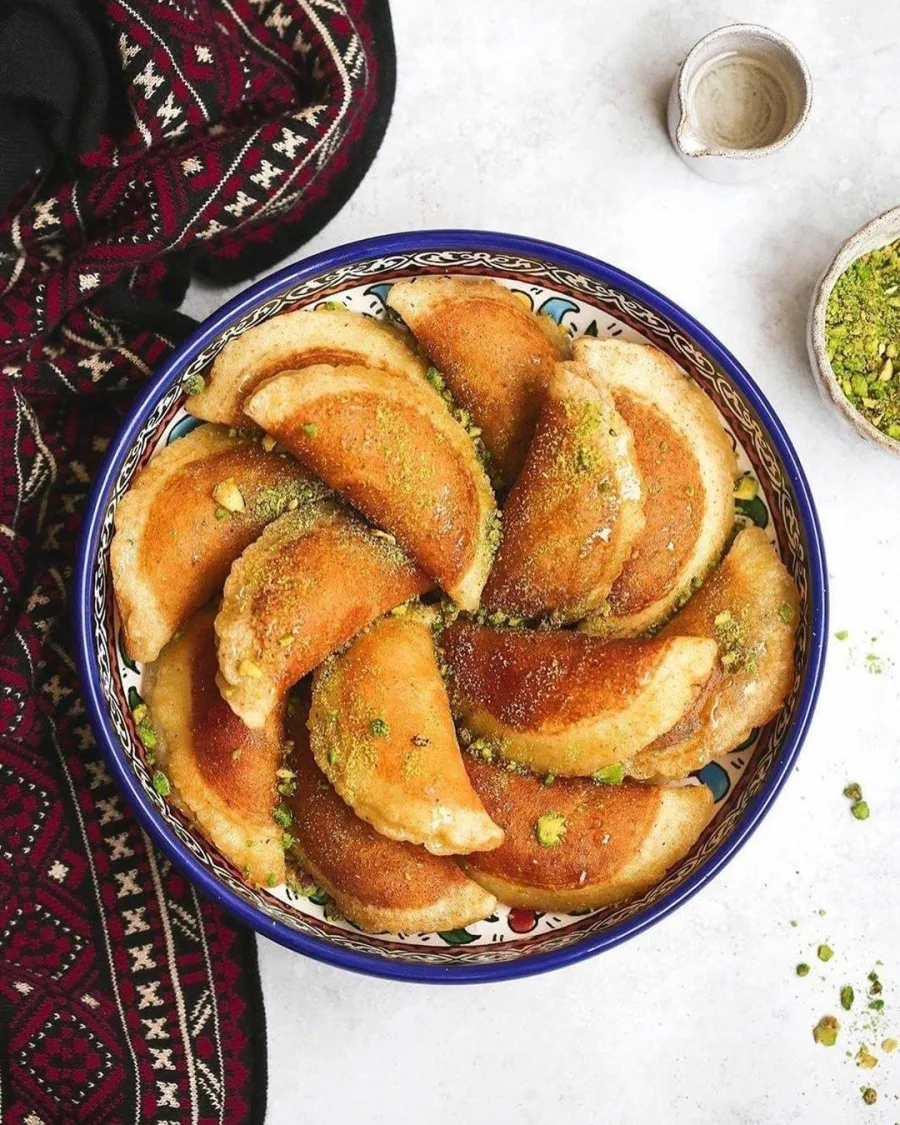
Qatayef
Small pancakes filled with nuts or cheese, folded and fried, then dipped in sweet syrup.
Ingredients
- •Flour
- •Yeast
- •Sugar
- •Walnuts
- •Cinnamon
- •Butter
- •Rose water
- •Honey
- •Pistachios
Instructions
Make Batter
Prepare pancake batter with yeast
Cook Pancakes
Cook small pancakes on one side only
Fill
Add nut or cheese filling
Seal and Fry
Fold and seal edges, then fry
Finish
Dip in syrup and garnish
Qatayef is a beloved Middle Eastern dessert that holds a special place in Jordanian cuisine, particularly during Ramadan. These delightful little stuffed pancakes are often described as "Arabic dumplings" - soft and pillowy on one side while crispy and golden on the other, filled with either sweet nuts or cheese, then drizzled with fragrant syrup.
The history of Qatayef dates back to the Fatimid Caliphate, where it was traditionally served during the holy month of Ramadan. The name comes from the Arabic word "qatafa," meaning to pick or pluck, referring to how the pancakes are picked up and folded once cooked. In Jordan, the sight of Qatayef vendors during Ramadan is a cherished cultural tradition that brings communities together.
The preparation of Qatayef is a fascinating process that begins with a special yeasted batter. The pancakes are uniquely cooked on only one side, creating bubbles that form a lacy pattern. When the top is still wet but set, the pancake is removed from the heat - this distinctive cooking method creates the perfect pocket for filling. Traditional fillings include a mixture of crushed walnuts, cinnamon, and sugar, or sweet cheese mixed with a touch of rose water. Once filled, the pancakes are sealed into crescents and either served as is or lightly fried for extra crispiness before being drenched in aromatic sugar syrup.
Modern variations of Qatayef have evolved to include creative fillings like pistachios, hazelnuts, or even chocolate. Some innovative cooks add a touch of orange blossom water to the batter or incorporate different spices into the filling. While purists might prefer the traditional versions, these modern interpretations have helped keep the dish relevant for younger generations.
In Jordan, Qatayef is typically enjoyed as an evening dessert during Ramadan, often shared with family and friends after breaking the fast. It's common to find street vendors and bakeries selling both ready-made Qatayef and the unfilled pancakes for people to assemble at home. The dessert is usually served warm or at room temperature, allowing the syrup to perfectly soak into the crispy exterior.
While undeniably delicious, Qatayef is quite rich in calories and sugar, particularly when fried and soaked in syrup. A single piece can contain around 150-200 calories, depending on the filling and preparation method. Those with nut allergies should be careful with the traditional walnut filling, though cheese-filled versions provide a safe alternative. The dessert contains gluten from the flour used in the batter, making it unsuitable for those with celiac disease. However, when enjoyed in moderation, particularly during festive occasions, Qatayef offers a unique taste of Jordanian culture and tradition.
